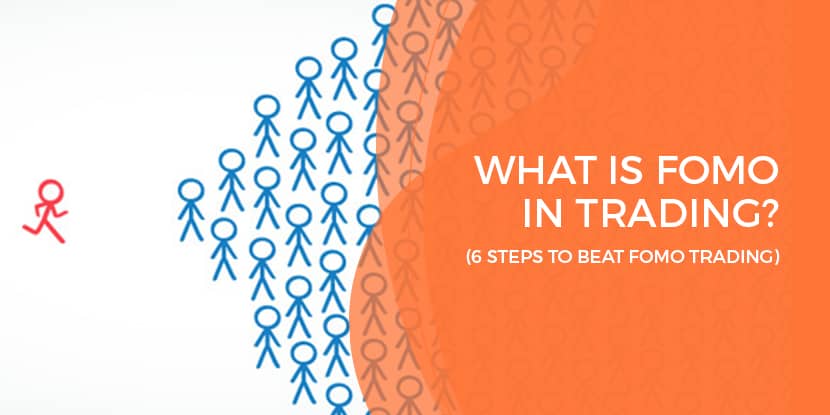FOMO is a constant enemy for all traders as it affects our decision-making on many levels. So, what is FOMO in trading? Join FMCPAY to discover all you need to know about FOMO, how to recognize it, and strategies to avoid it in this article!
1. What is FOMO in Trading
In the world of financial markets, emotions often play a significant role in trading decisions. One of the most common emotional triggers is FOMO, or the Fear of Missing Out.
So what is FOMO in trading? It refers to the psychological fear that a trader experiences when they believe they are missing out on a potentially profitable trade or investment. The anxiety often leads to rash decisions, such as entering a trade late, overtrading, or even chasing after volatile market trends without proper analysis.

FOMO can cloud judgment and make even experienced traders abandon their strategies in hopes of quick gains. The feeling of watching a stock or cryptocurrency skyrocket, while you’re not invested, can trigger a strong desire to jump into the trade without considering the risks.
FOMO, if unchecked, can lead to poor trading habits and increase the likelihood of making costly mistakes.
2. Differences Between FOMO in Crypto & Stock Maket
The key difference between FOMO in crypto and stock trading lies in the market’s volatility and accessibility. In crypto, prices can skyrocket or plummet within hours, fueling a more intense FOMO as traders fear missing massive short-term gains.
So what is FOMO in stock trading about? The stock market tends to be less extreme, as price generally moves at a steadier pace, though FOMO still drives impulsive buying during market rallies.
Crypto’s 24/7 trading environment also heightens the pressure, while stock markets have defined trading hours, giving traders more time to reflect on their decisions.
3. What Drives FOMO Trading?
Understanding what drives FOMO in trading is key to managing it. Several factors contribute to the fear of missing out, and they often stem from both external and internal triggers.
3.1. Market Volatility
Market volatility is one of the leading causes of FOMO. When prices move rapidly, especially during market rallies, traders may feel that they’re missing out on lucrative opportunities. The fear that prices will continue to rise can cause traders to enter positions without proper research, often at inflated prices.
3.2. Social Media Influence
In today’s digital age, social media platforms can fuel FOMO in trading. Traders are constantly exposed to success stories, screenshots of big wins, and influencer hype around certain stocks or cryptocurrencies. Seeing others profit can create a sense of urgency to follow the crowd, even if the move goes against your trading strategy.

3.3. News and Hype
Major market-moving news, such as positive earnings reports, mergers, or government policy changes, can trigger FOMO. Traders who didn’t invest early may feel pressured to join the trend, even if the move has already played out. The hype surrounding ICOs (Initial Coin Offering), TGEs (Token Generation Event) or new project launches also commonly leads to FOMO-driven decisions.
3.4. Trade without Plan
Lacking a structured trading plan or rules to follow, traders are more vulnerable to FOMO. Without a system, they may jump into trades without understanding the market’s movements or long-term trends. This often results in making emotional, rather than logical, decisions.
3.5. Over-Confidence
Setting unrealistic expectations such as doubling the capital within a short period can drive FOMO. This overconfidence, often triggered by a streak of successful trades, leads traders to believe they can “feel” the market’s direction and act on gut instinct rather than sound analysis. These traders may take larger risks or place bigger trades than they should, hoping for quick wins.
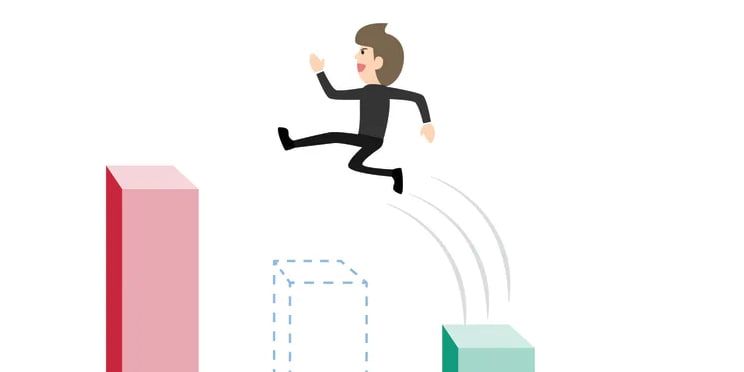
3.6. Hasty Effort After Loss
After a few losses, traders may start doubting their abilities, leading to feelings of insecurity. This uncertainty often causes them to abandon their trading plan, resulting in impulsive decisions driven by the FOMO on potential profits. Rather than waiting for solid trade setups, they may enter random positions in an attempt to regain lost ground, which typically leads to even more losses.
By understanding what is FOMO in trading and what drives them, traders can work on controlling these triggers and make more informed decisions, keeping emotions in check and avoiding costly mistakes.
4. Are You a FOMO Trader?
Recognizing what is FOMO in trading and whether you’re a FOMO trader or not is the first steps in addressing the problem. Here are some signs that indicate you might be driven by this psychological trap:
4.1. Are you trading without a clear strategy?
One clear signal of FOMO trading is entering trades without an entry or exit strategy. You might act on a gut feeling, a tip, a rumor, or a sudden market movement without conducting proper analysis or research.
If you find yourself setting trades without stop-loss or take-profit levels or neglecting the risk/reward ratio, you might be a FOMO trader. This lack of planning exposes you to unnecessary risks.

4.2. Are you not following your own trading plan?
Another sign of FOMO is entering trades that don’t fit your trading style, goals, or plan. This includes applying a completely new method from another trader disregarding your own risk tolerance and market conditions.
Straying from your trading plan or rules can lead to poor performance and confusion, making you lose sight of your goals and weakening your trading edge.
4.3. Are you trading out of greed or fear?
FOMO in trading can manifest as making trades driven by greed or fear. Whether you’re motivated by the urge for quick profits or the fear of missing out on a big opportunity, this emotional approach often leads to irrational decisions.
Alternatively, you might trade with an intent to recover from recently losses. This can lead to overtrade, overleverage, or make larger positions than intended.
If you notice any of these signs, you might be a FOMO trader. Understanding what is FOMO in trading and recognizing these patterns is the first step toward addressing them effectively.
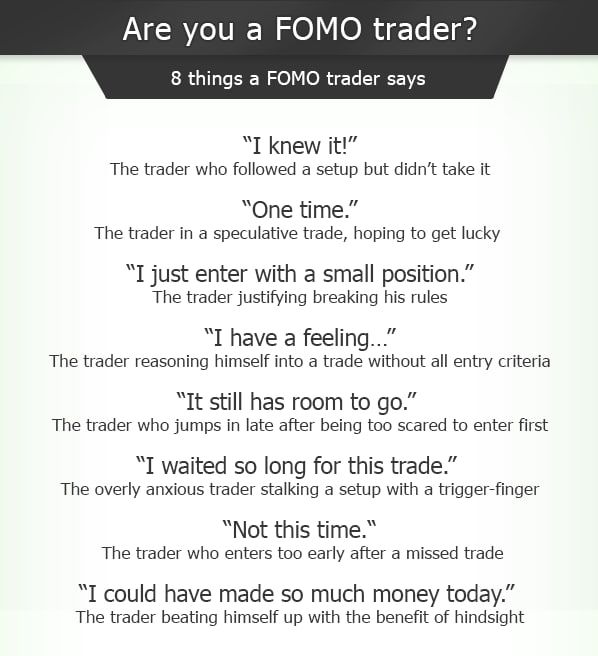
5. How to avoid FOMO Trading?
What is FOMO in trading if not an unnecessary emotional reaction? Managing it requires discipline, emotional control, and a clear trading plan. Now that we’ve identified the key signals and drivers of FOMO in trading, let’s discuss strategies to avoid it.
5.1. Stick to Your Trading Plan
One of the most effective ways to avoid FOMO in trading is to have a solid trading plan in place and, more importantly, to stick to it. Your trading plan should outline your goals, risk tolerance, entry and exit points, and the types of trades you’ll take. By following your plan, you reduce the chances of making impulsive decisions driven by FOMO.
5.2. Set Realistic Expectations
Another way to curb FOMO is by setting realistic expectations for your trades. Not every trade will be a big win, and it’s important to accept that missing a few profitable trades is part of the process. Avoid chasing unrealistic gains and remember that consistent, smaller profits can be more sustainable over time.
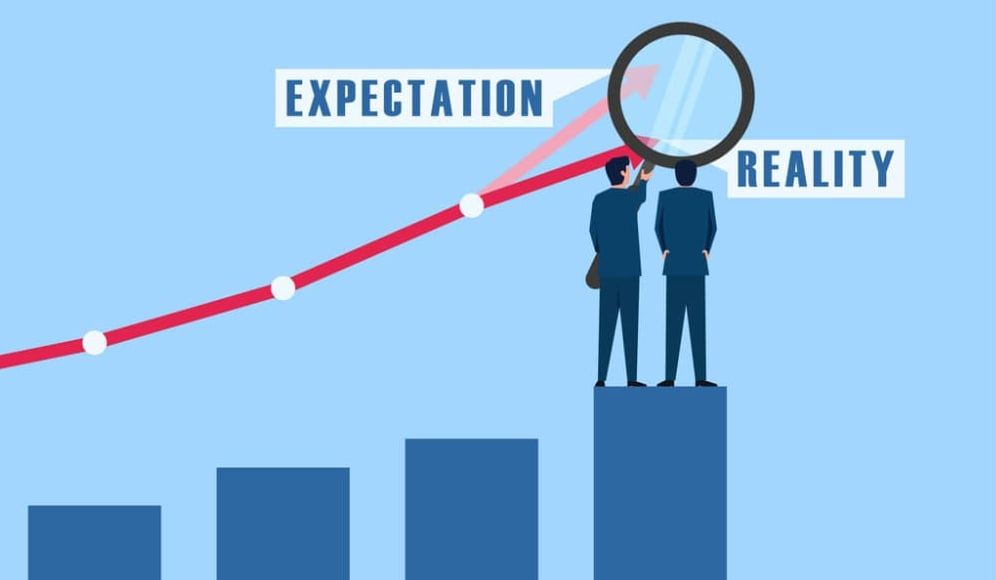
5.3. Use Stop-Loss and Take-Profit Orders
Automating parts of your trading can help mitigate the risk of FOMO. Setting stop-loss orders ensures you exit losing trades before they become unmanageable. Take-profit orders allow you to lock in profits without having to monitor the market constantly.
By placing these orders, you remove the emotional aspect from your trading and stick to a predefined strategy.
5.4. Trade with a Demo Account
If you’re unsure whether you’re acting on FOMO or rational analysis, consider practicing with a demo account. This allows you to test strategies without risking real capital. You can refine your decision-making process and build confidence in your ability to resist FOMO-driven impulses.
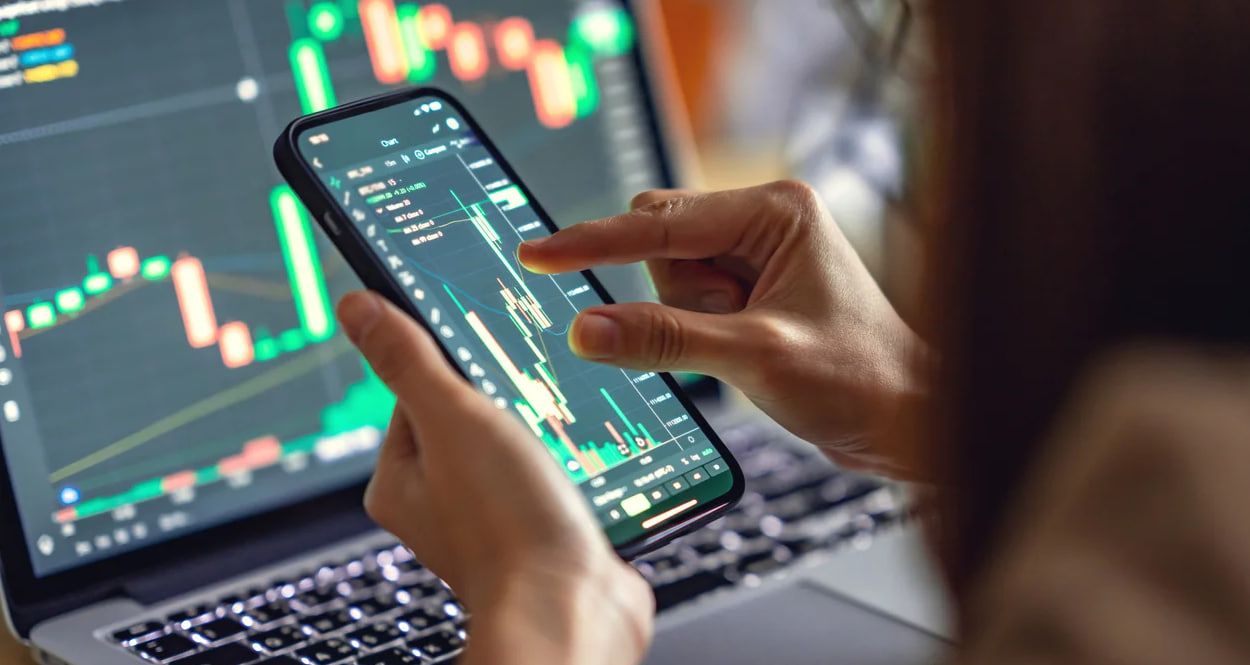
5.5. Focus on Long-Term Success
Trading is not about winning every trade or catching every market move. Focus on long-term success by sticking to your strategy and managing your risk. If you miss a trade, remember there will always be more opportunities in the future. The key is not to rush and to stay patient.
5.6. Practice Patience
Patience is a key trait of successful traders. If you feel the urge to enter a trade due to FOMO, take a step back and reassess the situation. Sometimes the best move is no move at all. Wait for the market to present a clear signal that aligns with your strategy before jumping in.

Conclusion
Understanding what is FOMO in trading is essential for navigating the financial markets effectively. This psychological barrier can lead to significant losses and impact traders at any experience level. That’s why avoiding FOMO is a must-have skill for your trading career.
We hope that this guide has wrapped up all you need to know and help you to overcome this FOMO syndrome. Don’t forget to stay tuned with FMCPAY for more interesting trading and crypto insights!

